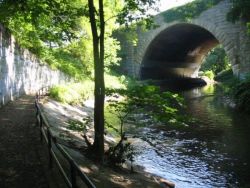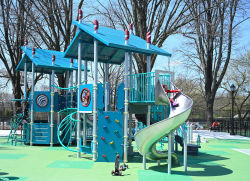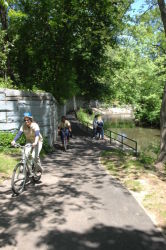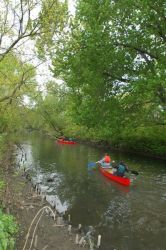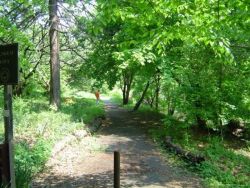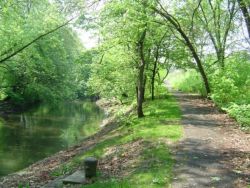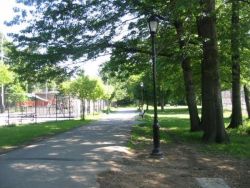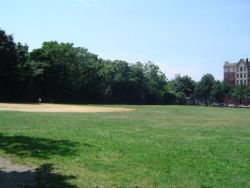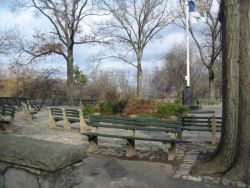Bronx Park
Ben Abrams Playground
Ben Abrams (1907-1984) operated a neighborhood luncheonette for many years on nearby Holland Avenue. He was an active member of the Hubert H. Humphrey Democratic Club, the Pelham Parkway Jewish Council, and B'nai B'rith, as well as a volunteer at Our Lady of Mercy Hospital. But perhaps most appreciated by his community was his café, an unofficial community center for the residents of the Pelham Parkway area.
Prior to being named Ben Abrams Playground in 1986, this property was informally called Lydig Avenue Playground by the community because of its location on the corner of Lydig Avenue and Bronx Park East. Philip Leidig was a baker who immigrated to America in 1750. He began by supplying sea biscuits to the merchant marine, and his son David expanded the business by purchasing flourmills near West Farms in 1830. Leidig’s grandson anglicized the surname from Leidig to Lydig, and later sold the family's land. At the end of the 19th century, Bronx Park was built on what had been Lydig's land.
Bronx Park, like the surrounding borough and the river that runs through it, is named for the 17th century Swedish sea captain who settled the area, Jonas Bronck (1600-1643). Bronck (sometimes also spelled Bronk) learned navigation and became a sea captain in Amsterdam, and in 1639 arrived in the area now named for him. The Swede purchased approximately 500 acres of land from the Dutch West India Company, and traded tools, clothes, and utensils with local Native Americans for additional property. He built a stone home in what is now Morrisania, and owned one of the largest collections of books in the colony. Bronck’s estate also played host to a peace conference with the Weckquasgeck Indians in 1642.
After Bronck, this property passed through several different families before the City acquired 640 acres of it between December 1888 and January 1889. Inspiration for Bronx Park came during a widespread movement to create public parks throughout the city in the 1880s. In 1881, John Mullaly (1835-1915), a former newspaper reporter and editor, and a group of citizens concerned with widespread urban growth formed the New York Park Association. The group’s lobbying efforts helped the passage of the New Parks Act in 1884, which funded the acquisition of several major undeveloped lands for the purpose of creating parks and parkways. By 1890, the city had acquired properties in the Bronx that would eventually become known as the Van Cortlandt, Pelham Bay, Bronx, Crotona, and Claremont Parks, as well as four parkways.
In 1997, a $251,495 allocation from Mayor Giuliani funded a renovation of the playground featuring new play equipment, safety surfacing, and a spray shower. These renovations complement the existing playground facilities: a flagpole with a yardarm, a spray shower, a drinking fountain, benches, swings for tots and kids, and game tables.
Check out your park's Vital Signs
Clean & Safe
Green & Resilient
Empowered & Engaged Users
Share your feedback or learn more about how this park is part of a
Vital Park System

